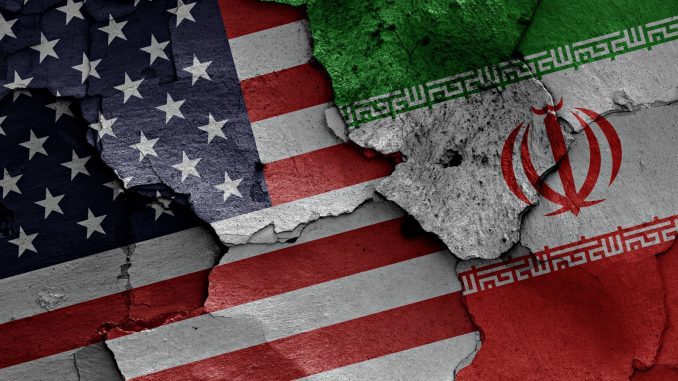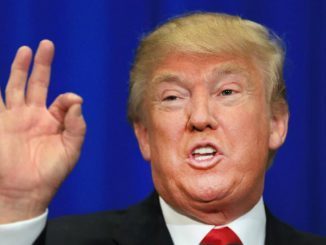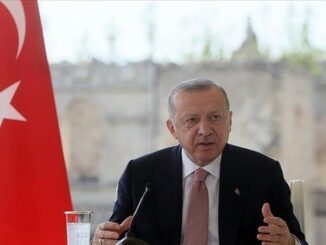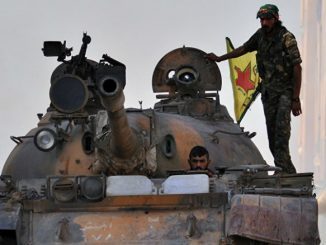
The past few days witnessed a quick collapse of the relations between the US and Iran after a short time of relative calm. However, this tension isn’t new and has old and deep roots, but did it all begin?
Relations between the two nations began in the mid-to-late nineteenth century. Initially, while Iran was very wary of British and Russian colonial interests, the United States was seen as a more trustworthy great power.
During World War II, Iran was invaded by Britain and the Soviet Union, both US allies, but relations continued to be positive after the war until the later years of the government of Mohammed Mossadeq, who was overthrown in 1953 by a coup organized by the CIA and aided by the MI6.
This was followed by an era of very close alliance between Shah Mohammed Reza Pahlavi’s regime and subsequent US governments, which was in turn followed by a dramatic reversal and disagreement between the two countries after the 1979 Iranian Revolution.
The 1979 Iran hostage crisis
On November 4, 1979, members of a group of revolutionary students angered that the recently deposed Shah had been allowed into the United States, occupied the American embassy in Tehran and took American diplomats hostage. The 52 American diplomats were held hostage for 444 days.
US President Jimmy Carter ordered a rescue operation on April 24, 1980, which resulted in an aborted mission and the deaths of eight American soldiers. The crisis ended with the signing of the Algiers Accords on January 19, 1981. A day later, shortly before Ronald Reagan was sworn in as the next US president, the hostages were released.
After the seizure of the US embassy in Tehran, Washington froze about $12 billion in Iranian assets, including bank deposits, gold, and other properties. Most of those were released in 1981 as part of the release deal. Some assets—Iranian officials say $10 billion, but US officials say much less—remain frozen, pending resolution of legal claims arising from the Revolution.
Relations under the Reagan and Bush administrations 1981-93
US intelligence and logistical support played a crucial role in arming Iraq in the Iran-Iraq War, although Bob Woodward states that the United States gave information to both sides, hoping “to engineer a stalemate”. In search for a new set or order in this region, the US government adopted a policy designed to contain both Iran and Iraq economically and militarily in favor of the US national interest.
During the second half of the Iran–Iraq War, the Reagan Administration pursued several sanction bills against Iran; on the other hand, it established full diplomatic relations with Iraq by removing it from the list of State Sponsors of Terrorism in 1984.
Subsequently, the administrations of Presidents Reagan and George H.W. Bush authorized the sale to Iraq of numerous “dual-use” items, including poisonous chemicals and deadly biological viruses, such as anthrax. The Iran–Iraq War ended with both agreeing to a ceasefire in 1988.
In 1986, members of the Reagan administration helped sell weapons to Iran, using the profits to fund anti-communist Contras militants in Nicaragua. Documents relating to the affair were destroyed or withheld from investigators by Reagan administration officials.
In November 1986, President Reagan issued a televised statement that the arms sales did not occur. One week later, Reagan confirmed that weapons had indeed been transferred to Iran. He denied that they were part of an exchange for hostages.
From Clinton to Bush II: sanctions and the “Axis of Evil”
In April 1995, a total embargo on dealings with Iran by American companies was imposed by President Bill Clinton. This ended trade, which had been growing following the end of the Iran–Iraq War.
The following year, the US Congress passed the Iran-Libya Sanctions act, designed to prevent other countries from making large investments in Iranian energy. The act was denounced by the European Union as invalid, but it blocked some investment for Iran.
In 1998, the US indictment of Osama bin Laden stated that al-Qaeda “forged alliances . . . with the government of Iran and its associated terrorist group Hezbollah for the purpose of working together against their perceived common enemies.”
The 9/11 Commission Report stated that 8 to 10 of the hijackers on 9/11 previously passed through Iran and their travel was facilitated by Iranian border guards. The report also found “circumstantial evidence that senior Hezbollah operatives were closely tracking the travel of some of these future muscle hijackers into Iran in November 2000.”
On January 29, 2002 – 4 months after 9/11, President Bush gave a speech in which he described Iran, along with North Korea and Iraq, as an “axis of evil” and warning that the proliferation of long-range missiles developed by these countries constituted terrorism and threatened the United States.
Iran’s nuclear program
Since 2003, the United States has alleged that Iran has a program to develop nuclear weapons. Iran has maintained that its nuclear program is aimed only at generating electricity.
The US position is that “a nuclear-armed Iran is not acceptable”, but officials denied that the United States is preparing for an imminent strike. Britain, France and Germany have also attempted to negotiate a cessation of nuclear enrichment activities by Iran.
Pushing for international sanctions against Iran because of its nuclear program, the United States accused Iran of providing logistical and financial support to Shi’a militias in Iraq. Iran denied this claim. The US government imposed sanctions on an Iranian bank on September 8, 2006, barring it from direct or indirect dealings with American financial institutions.
On March 8, 2006, American and European representatives noted that Iran has enough unenriched uranium hexafluoride gas to make ten atomic bombs, adding that it was “time for the Security Council to act”, triggering a new series of UN-sponsored sanctions against Iran over the following years.
2009 -2017: Obama brings about change
Two days after Barack Obama was elected president in November 2008, Iran’s president Mahmoud Ahmadinejad issued the first congratulatory message to a newly elected American president since 1979: “I hope you will prefer real public interests and justice to the never-ending demands of a selfish minority and seize the opportunity to serve people so that you will be remembered with high esteem.”
On March 19, 2009, the beginning of the festival of Nowruz, Obama spoke directly to the Iranian people in a video saying, “the United States wants the Islamic Republic of Iran to take its rightful place in the community of nations. You have that right—but it comes with real responsibilities.”
On July 9, 2009, the United States released five Iranian diplomats, who had been held since January 2007. Critics believed this was a part of hostage exchange deal between the countries, which the State Department denied.
Since 2006, Iran has held a series of meetings with a group of six countries: China, France, Germany, Russia, United Kingdom, and the United States. These six are known as the P5+1 (the permanent five members of the UN Security Council plus Germany).
Formal negotiations toward the Joint Comprehensive Plan of Action on Iran’s nuclear program began with the adoption of the Joint Plan of Action, an interim agreement signed between Iran and the P5+1 countries in November 2013.
For the next twenty months, Iran and the P5+1 countries engaged in negotiations and ended in signing the historic Iran nuclear deal which saw Tehran agree to amend its nuclear output in order to lift all nuclear-related economic sanctions, freeing up tens of billions of dollars in oil revenue and frozen assets.
After lifting the sanctions, Iranian president Hassan Rouhani visited Europe and made deals that worth billions of dollars. European companies started looking for investment opportunities in the growing Iranian market.
Trump’s era and waking the tension
Trump’s election might change the whole game and threaten the development that was built in the past months.
Trump has said during his election campaign that the deal as “disastrous” and said it would be his “number one priority” to dismantle it.
These threats became clearer after Trump’s inauguration, as he signed an executive order temporarily barring thousands from seven countries in the Middle East and Africa, including Iran, from obtaining visas to travel to the United States.
In a clear challenge, a ballistic missile test was conducted by Iran on Sunday.
A U.S. defense official said that the missile test ended with a “failed” re-entry into the earth’s atmosphere, and later German sources said that the test included nuclear-capable missiles that are considered a breach of the nuclear deal.
After that Trump announced that “we’re officially putting Iran on notice”, and declared new sanctions against Iran later.
In a move designed to punish Iran for testing its ballistic missile program, the US Treasury Department said it had published a list of 13 people and 12 entities facing new sanctions.
In response, Iran’s Revolutionary Guard Corps launched military drills on Saturday and tested new missile and radar systems, which resembles a clear challenge to the US threats.



